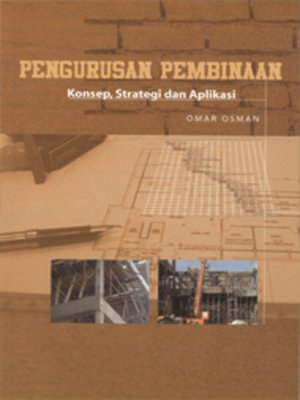
Sign up to save your library
With an OverDrive account, you can save your favorite libraries for at-a-glance information about availability. Find out more about OverDrive accounts.
Find this title in Libby, the library reading app by OverDrive.



Search for a digital library with this title
Title found at these libraries:
| Library Name | Distance |
|---|---|
| Loading... |
Construction management of a building can be carried out without any planning and construction schedule. Planning and scheduling are done when there are documents and charts to assist the managers or contractors to complete the construction project. In the past, skilled craftsmen could construct a building without a plan, having less need for detailed planning with documents and certain output. Nevertheless, there were still plans and management, although they were only in the minds of the craftsmen. The reality is, such things no longer exist; even for a construction project to renovate a home, plans are necessary for approval of the local authorities. Failure to submit plans may result in house owners being charged in court for violating the provisions of the law in the country. Thus, the construction management of a building or project will need a more systematic approach because of the increasing complexity of the construction process, use of a variety of resources and advanced technology as well as additional legislation that must be complied with. The construction management highlighted in this book examines the matters that must be carried out within the organisation of a construction contractor. This approach is quite different from the approach of overall project management as raised by the Project Management Institute (PMI)1. Some books written on construction management focus on technical aspects and engineering. Undeniably, technical and engineering matters are important in construction and encompass building construction, infrastructure and other types of facilities.Some other books focus on site supervision and aspects needed to handle specific matters on the construction site. There are also books to explain the technical aspects of management such as scheduling and specific techniques for managing the construction process (Burton and Mitchelle 1994). The complex projects are usually large or mega projects such as construction of dams, long bridges and underground tunnels. They include the Kuala Lumpur City Centre and Petronas Twin Towers, Kuala Lumpur flood mitigation tunnel known as the SMART Tunnel, Channel Tunnel and Bakun Dam. The approach in this book covers three main aspects, namely the framework, process and resources which are used to analyse construction management. To explain construction management, three means are used—analysis of construction management through existing and modified concepts. For example, this book uses the three-aspect analysis concept: entity, phase and process. It also uses the construction management frame concept which is divided into the output framework, resources (labour, technology, materials and components, finance, time and environment) and construction management itself. In managing construction, it is recommended that the manager and the organisation use a strategy that divides the construction management into 2 phases: pre-construction and construction including pre-occupation. In every phase are processes which should be emphasised. For example, the pre-construction phase covers planning during the tender, pre-construction planning and construction preparation. The construction management application gives relevant examples in each chapter analysing the problems and providing their solutions.







